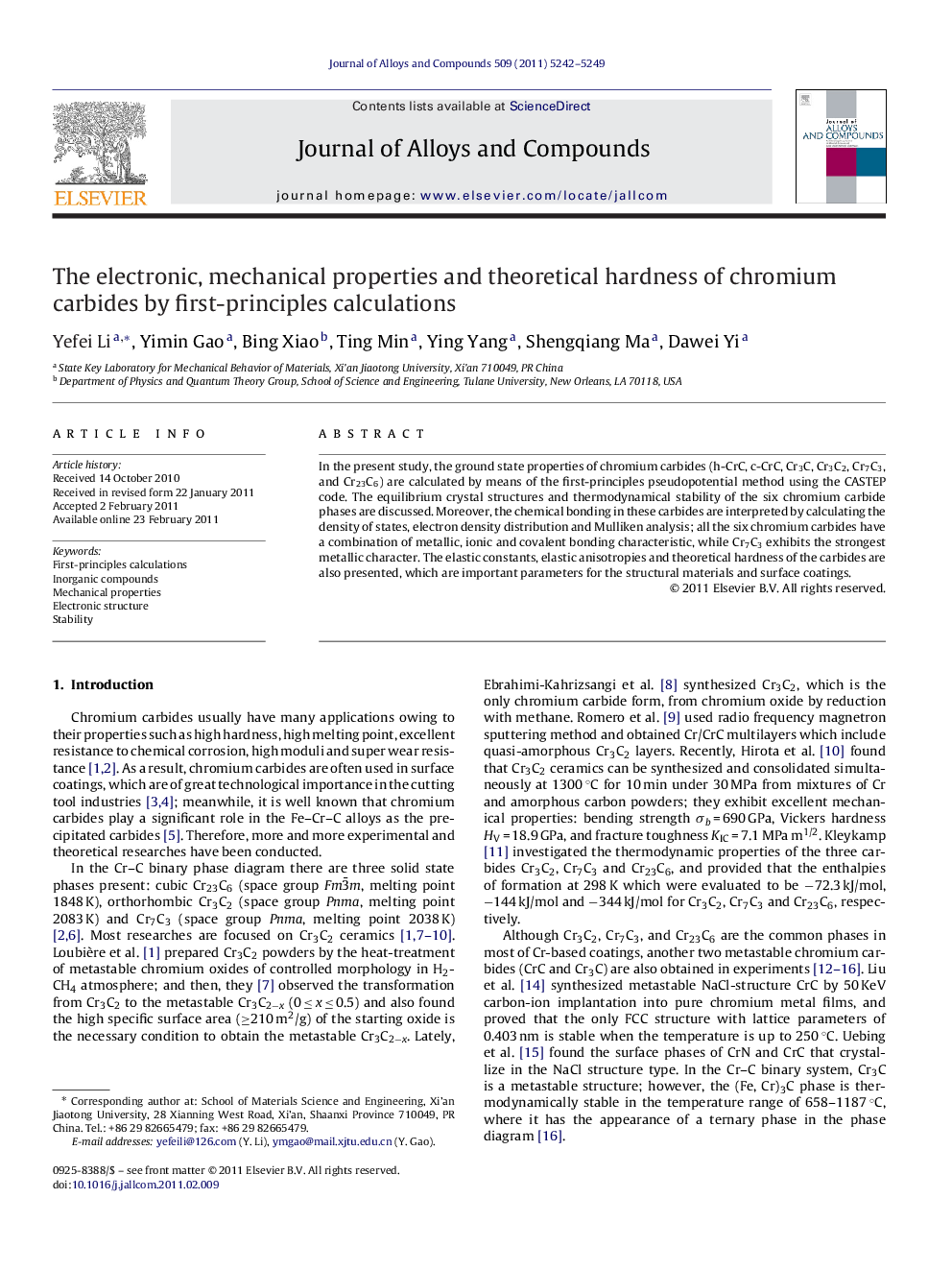| Article ID | Journal | Published Year | Pages | File Type |
|---|---|---|---|---|
| 1617449 | Journal of Alloys and Compounds | 2011 | 8 Pages |
In the present study, the ground state properties of chromium carbides (h-CrC, c-CrC, Cr3C, Cr3C2, Cr7C3, and Cr23C6) are calculated by means of the first-principles pseudopotential method using the CASTEP code. The equilibrium crystal structures and thermodynamical stability of the six chromium carbide phases are discussed. Moreover, the chemical bonding in these carbides are interpreted by calculating the density of states, electron density distribution and Mulliken analysis; all the six chromium carbides have a combination of metallic, ionic and covalent bonding characteristic, while Cr7C3 exhibits the strongest metallic character. The elastic constants, elastic anisotropies and theoretical hardness of the carbides are also presented, which are important parameters for the structural materials and surface coatings.
► This paper investigates the six Cr-C binary compounds (h-CrC, c-CrC, Cr3C, Cr3C2, Cr7C3, and Cr23C6) by using DFT; all of the carbides show a mixed character of metallic, covalent and ionic bonds; the thermodynamic stability decreases in the sequence of Cr3C2> Cr7C3> Cr3C≈ Cr23C6> h-CrC> c-CrC, and the positive value of formation enthalpy for c-CrC can explain its metastable nature. ► The stability of h-CrC can be explained based on the electronic structures of Cr sub-lattices in cubic and hexagonal phases. ► By using Šimůnek's theory, the calculated theoretical values of hardness are consistent with the current experimental results for Cr3C2, Cr7C3 and Cr23C6. The hardnesses of the two CrC phases are notably higher than other phases; they could be used as the wear resistance coatings. ► The calculated elastic constants indicate that h-CrC has higher elastic moduli; but this phase is more brittle than other carbides because of smallest B/G ratio. The values of GV/GR and BV/BR for all these Cr-C carbides are distributed around one (GV/GR≈1, BV/BR≈1), indicating that they are locally isotropic crystals not matter with their crystal class.
